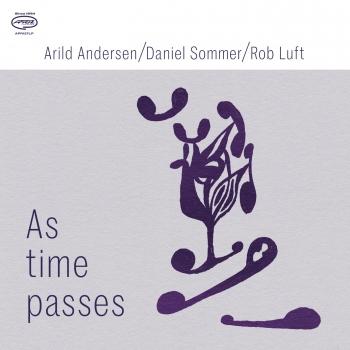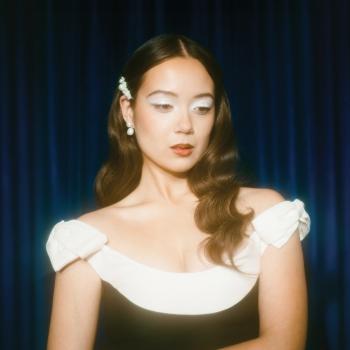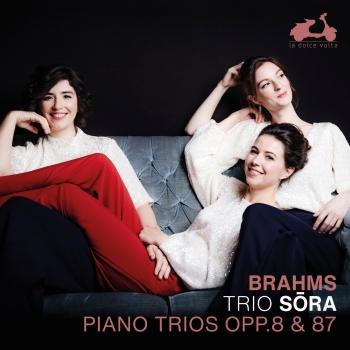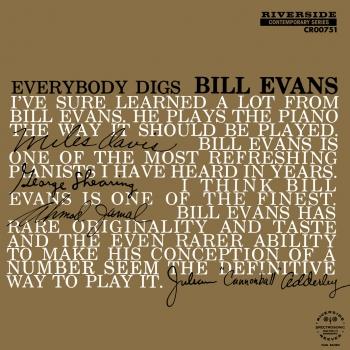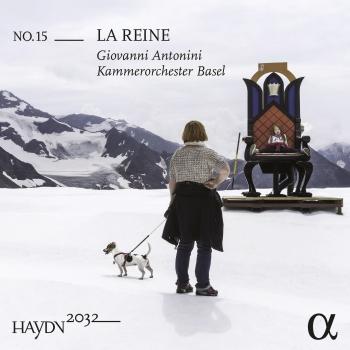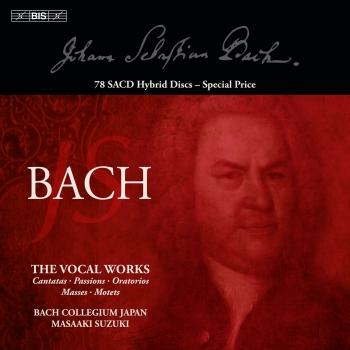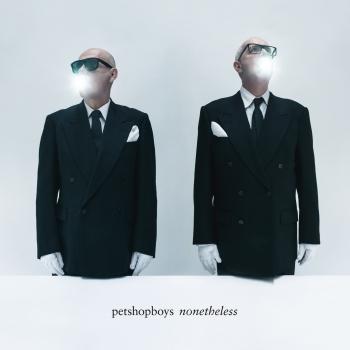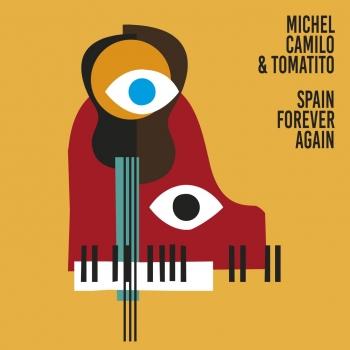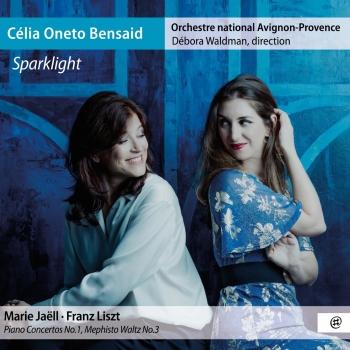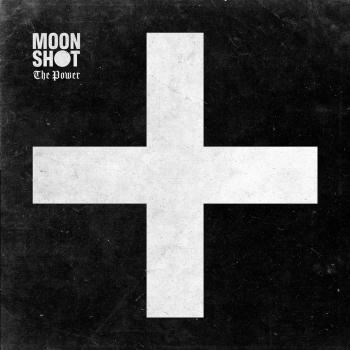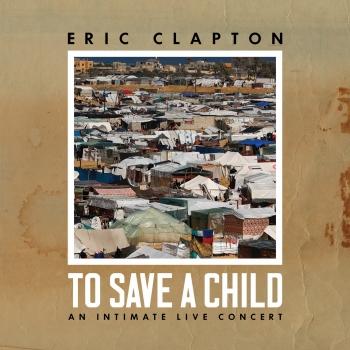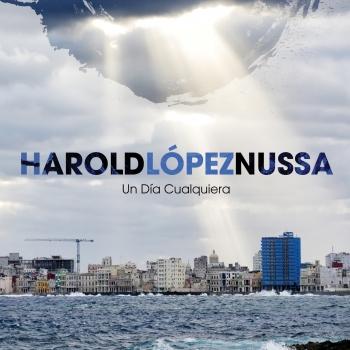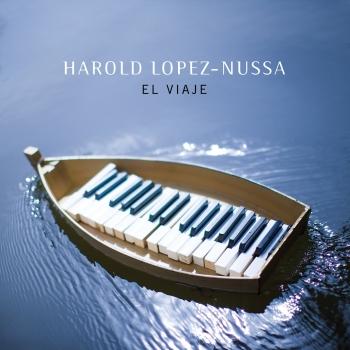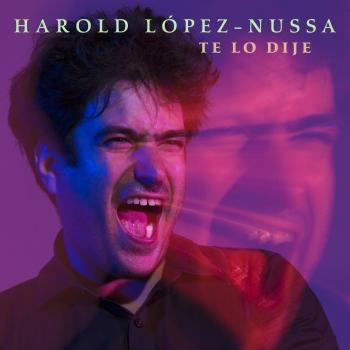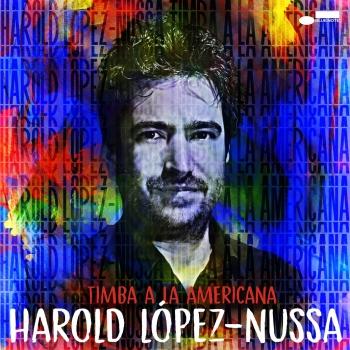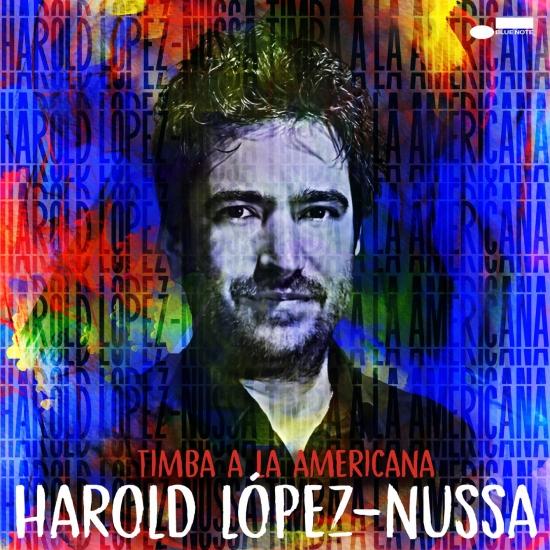
Timba a la Americana Harold López-Nussa
Album info
Album-Release:
2023
HRA-Release:
25.08.2023
Album including Album cover
I`m sorry!
Dear HIGHRESAUDIO Visitor,
due to territorial constraints and also different releases dates in each country you currently can`t purchase this album. We are updating our release dates twice a week. So, please feel free to check from time-to-time, if the album is available for your country.
We suggest, that you bookmark the album and use our Short List function.
Thank you for your understanding and patience.
Yours sincerely, HIGHRESAUDIO
- 1Funky04:11
- 2Cake a la Moda04:43
- 3Mal Du Pays04:48
- 4Rat-a-Tat04:25
- 5Conga a la Americana03:13
- 6Afro en Toulouse05:31
- 7Tumba la Timba05:07
- 8Mamá01:48
- 9Tierra Mía04:57
- 10Hope03:01
Info for Timba a la Americana
Von kreativer Unruhe getrieben – afrokubanischer Jazz mit neuem Dreh: Auf “Timba A La Americana”, seinem Debütalbum für Blue Note, brennt der kubanische Pianist Harold López-Nussa mit Unterstützung von Produzent Michael League ein wahres musikalisches Feuerwerk ab.
Wenn es nach Harold López-Nussa geht, steht gerade eine neue kubanische Revolution bevor. Diesmal ist es allerdings keine politischer Art, sondern “nur” eine musikalische. Denn auf “Timba a la Americana”, seinem funkensprühenden Debütalbum für Blue Note Records, hat sich der Klaviervirtuose alle erdenkliche Mühe gegeben, die Konventionen dessen zu überkommen, was seit den 1950er Jahren allgemein als afrokubanischer Jazz oder etwas breiter gefasst als Latin-Jazz bezeichnet wird. Zur Seite stand ihm bei dieser ambitionierten Unternehmung neben den fantastischen Musikern seines aktuellen Quintetts der Produzent Michael League, seines Zeichens Gründer, Leader und Bassist der mit drei Grammys dekorierten Fusionband Snarky Puppy.
In enger Zusammenarbeit mit Michael League suchte Harold López-Nussa nach neuen, moderneren Formen für die Clave-Muster, die seit jeher den Herzschlag der afrokubanischen Musik bilden. Dabei griffen sie u.a. auf Elemente des Danzón zurück, einen grundlegenden Musik- und Tanzstil, der Ende des 19. Jahrhunderts in der Provinzhauptstadt Matanzas entstanden war. Die Son-Montuno- und Son-Tumbao-Riffsvon Benny Moré und anderen Helden der afrokubanischen Musik dienten ihnen ebenso als Inspiration wie die elektrisierenden Mambos von Dizzy Gillespie und Machito. Außerdem kombinierten sie alte Bata-Trommelrhythmen, die auf Kuba noch heute zur Beschwörung der Orishas genannten Yoruba-Götter verwendet werden, mit den vertrackten Polyrhythmen ihres modernen Improvisationskollektivs.
Gebildet wird dieses Kollektiv durch den Bassisten Luques Curtis, der schon seit mehr als fünfzehn Jahren beständig zwischen den Polen Jazz und lateinamerikanische Musik hin- und herpendelt, Harolds jüngerem Bruder Ruy Adrian López-Nussa am Schlagzeug und Perkussionist Bárbaro “Machito” Crespo. Und dann ist da zu guter Letzt noch der aus der Schweiz stammende Mundharmonika-Spieler Grégoire Maret, der bereits mit Herbie Hancock, Pat Metheny, Prince und unzähligen anderen Stars zusammengearbeitet hat. Auch Michael League, der sechs der zehn Nummern des Albums zusammen mit López-Nussa komponierte, greift natürlich aktiv ins Geschehen ein: diesmal allerdings nicht als Bassist, sondern mit einem Arsenal von Synthesizern.
Für López-Nussa sind elektrische Instrumente und Synthesizer ein wirkliches Novum. Auf “Timba a la Americana” setzt er sie nämlich zum allerersten Mal selbst ein. “Das war Michaels Idee”, erzählt der Pianist, “er hat mich dazu ermutigt, mich mit ihnen wirklich auseinanderzusetzen. Wir hatten ein nettes Rhodes im Studio und Michael brachte dann noch andere Geräte mit. Und so wir begannen dann einfach, diese elektronischen Klänge hineinzumischen. Michael hatte Verständnis dafür, dass ich die Tradition respektieren wollte. Aber er nahm auch meine kreative Unruhe wahr und wollte mich aus meiner Komfortzone herauslocken.”
“Es gibt einige Stücke, bei denen man durchaus denken könnte, dass sie klassische Rhythmen aus längst vergangenen Zeiten haben, etwa Rumba und Conga und so weiter”, meint López-Nussa. “Aber dann gibt es andere Stücke, bei denen der Grundrhythmus nicht so offensichtlich ist und die eine gewisse Komplexität aufweisen, was ich ebenfalls liebe. Letztendlich wollte ich aber nie den Groove verlieren. Ich liebe es zu tanzen, und ich finde es immer toll, wenn die Leute zu meiner Musik tanzen. Das ist für mich ein Zeichen dafür, dass die Musik lebendig ist.”
Und das kann man der Musik, die auf “Timba a la Americana” zu hören ist, quasi amtlich bescheinigen. Sie ist von absolut mitreißender Vitalität, Quirligkeit und Virtuosität. Mit ihrer einzigartigen Kombination aus klassischen, folkloristischen und populären Elementen sowie der Begeisterung der Band für die Improvisation spiegelt sie zugleich die ganze Bandbreite und den Reichtum der kubanischen Musik wider.
Der kubanische Pianist Harold López-Nussa baut sich gerade rasch eine weltweite Anhängerschaft im Jazz und darüber hinaus auf. Er spiegelt die ganze Bandbreite und den Reichtum der kubanischen Musik wider, mit ihrer unverwechselbaren Kombination aus klassischen, folkloristischen und populären Elementen. Zu seinem Quartett Timba a la Americana gehören der Mundharmonika-Meister Gregoire Maret, der Bassist Luques Curtis und Harolds Bruder Ruy Adrian López-Nussa am Schlagzeug. Er ist in angesehenen Konzertsälen wie dem Kennedy Center und dem SFJAZZ Center sowie bei einigen der besten Jazzfestivals der Welt aufgetreten. Ein neues Album wird in Kürze bei Blue Note erscheinen. Seine Musik „weckt die Sehnsucht, durch die schmutzigen, hübschen Straßen der Stadt zu gehen, träumend davon, dass aus jedem Fenster Musik dröhnt.” (LondonJazz News)
Harold López-Nussa, Klavier und Fender Rhodes
Ruy Adrián López-Nussa, Schlagzeug
Grégoire Maret, chromatische Mundharmonika
Luques Curtis, Kontrabass
Bárbaro (Machito) Crespo, Congas, Bombo Legüero
Michael League, Moog Matriarch, Prophet 6, Handclaps, Gesang
Produced & recorded by Michael League
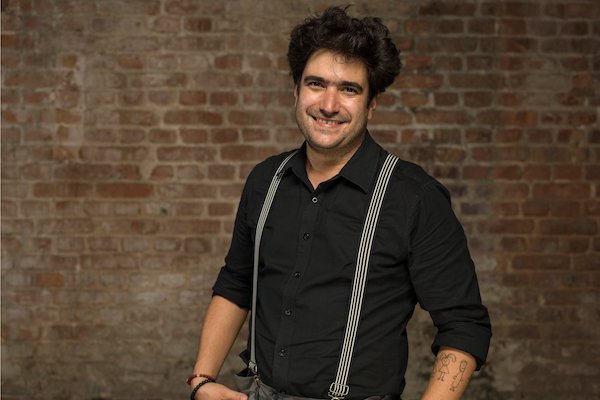 Harold Lopez-Nussa
Harold Lopez-Nussa
For more than a half-century, the embrace between Cuba and the United States has been subject to an odd dance of politics, including a still-standing embargo. Nevertheless, the bond between the two nations is deep and strong as ever, expressed most forcefully through the dance of culture—especially music.
It’s hard to imagine the U.S. jazz scene without the influence of the many Cuban musicians living here. Yet the musicians who remain in Cuba—whose relationship with jazz and other musical forms stays grounded in their native island’s cultural traditions and daily life—maintain a unique perspective. They tell a specific story.
Un Día Cualquiera, pianist HAROLD LÓPEZ-NUSSA‘s second release for Mack Avenue Records, represents this musical vantage point with force and innovation. He tells this story—his story—with drama, heartfelt emotion and consummate skills.
López-Nussa was born 1983 in Havana, where he still lives. “I need the kind of relaxed life that Havana gives me,” he said. For López-Nussa, whose award-winning music has led to international tours and who holds dual citizenship in Cuba and France. “Every time I return to Cuba, I feel something special—not just a connection with my family and friends, but with the place itself. This is where my music comes from, what it talks about.”
His previous Mack Avenue album, El Viaje (The Journey), was released on the heels of President Obama’s historic 2016 visit to Havana, against a backdrop of newly relaxed trade and travel restrictions. Un Día Cualquiera arrives as U.S. restrictions regarding Cuba again tighten under the Trump administration; considered in that light, the album is an affirmative statement that music will always cross borders and defy obstacles. “I want to grow closer to the American people,” López-Nussa said. “This has always been an important desire for Cubans, especially musicians. It’s impossible for us to be separate because we have so much in common, so much to share.”
Musically, Lopez-Nussa’s last album augmented his band with additional instruments and influences, including Senegalese bassist Alune Wade, to achieve a globalized sound. For “Un Día Cualquiera,” Lopéz-Nussa sticks to his core trio, with his younger brother Ruy Adrián López-Nussa on drums and percussion, and bassist Gaston Joya—a group the pianist first convened a decade ago in Cuba.
“These are my closest friends and two of the greatest musicians of my generation in Cuba,” he said. “We’ve played a lot together through the years, but this is the first time that we’ve toured and recorded as a working trio. When we play to together, something special always happens and I feel comfortable and free, because they know how my music works and where I will go even before I get there.”
The island of Cuba is dotted with families known for musical achievement. López-Nussa grew up in one such home. On May 18, 2018, Washington D.C.’s Kennedy Center will pay tribute to this legacy within its sprawling “Artes de Cuba Festival” through a concert showcasing the Lopéz-Nussa family. Harold Lopéz-Nussa and his brother will perform alongside their father, Ruy López-Nussa, an esteemed drummer and educator, and their uncle, Ernán López-Nussa, an acclaimed pianist. (Their late mother, Mayra Torres, was a highly regarded piano teacher.)
Harold López-Nussa’s music reflects the full range and richness of Cuban music, with its distinctive combination of classical, folkloric and popular elements, as well as its embrace of jazz improvisation and interaction. His career gracefully spans styles. Early on, he recorded Heitor Villa-Lobos ́ Fourth Piano Concerto with Cuba’s National Symphony Orchestra (2003) and won First Prize at the Jazz Solo Piano Competition at the Montreux Jazz Festival, Switzerland (2005). He was featured on the album Ninety Miles, playing alongside jazz stars David Sánchez, Christian Scott and Stefon Harris, and Esencial (of compositions by revered Cuban classical guitarist, composer and conductor Leo Brouwer). He spent three years in the touring band of the beloved Cuban singer Omara Portuondo.
At the age of eight, López-Nussa began studying at the Manuel Saumell Elementary School of Music, then the Amadeo Roldán Conservatory and finally graduating with a degree in classical piano from the Instituto Superior de Artes (ISA). On two tracks here, he dips into the repertoire of Ernest Lecuona—“one of the greatest Cuban composers of all time,” he said, who, like Gershwin in the U.S., brought indigenous and popular forms to bear on classical repertoire. Lopez-Nussa’s interpretations of “Danza de los Ñañigos,” which is based on Afro-Cuban religious rituals, and “Y la Negra Bailaba,” which, he said, “is somewhere between Cuban son and danzón styles,” represent less liberties taken than the unfolding of a deep understanding of Lecuona’s towering legacy.
López-Nussa grew up in Centro Habana, a neighborhood known for its folkloric Afro-Cuban ceremonies. “There would be two or three ceremonies each week, and I could hear them from my house,” he recalled. “What I soaked in there has never left me.” His original composition, “Elegua,” translates batá drum rhythms and chants for a Yoruba deity to a jazz-trio format, and forms one of the album’s dramatic high points.
The ease and invention with which he improvises at the piano, and the suppleness with which his trio swings make it hard to believe that López-Nussa didn’t really take up jazz until he was 18 years old. “Jazz was scary,” he said. “Improvisation was scary.” Yet he felt emboldened by Herbie Hancock’s 1996 album, The New Standard, of jazz interpretations of pop, rock and R&B songs. “That gave me new ideas about what was possible, and what I could do,” he said. He found inspiration, too, from Cuba’s great jazz pianists—the ongoing work of the reigning master Chucho Valdés, as well as recordings of Chucho’s father, the late Bebo Valdés. Here, López-Nussa’s composition, “Una Tarde Cualquiera en Paris,” pays homage to the calm, reflective quality of Bebo’s pianism. Another López-Nussa original, “Mi Son Cerra’o” is meant to evoke the sound and spirit of the early descargas (jam sessions) on which Bebo played, the earliest Cuban jazz recordings. López-Nussa’s tender rendition of “Contigo en la Distancia” a bolero written by Cuban singer-songwriter César Portillo de la Luz in 1946 (covered in the decades since by singers ranging from Plácido Domingo to Christina Aguilera) reveals lessons learned on bandstands accompanying Omara Portuondo. “She showed me how to put all of your passion, your whole existence, into a single song,” he said.
Un Día Cualquiera is a forceful statement from a Cuban musician leading his tight-knit Cuban band, recorded in the U.S. (at WGBH Studios in Boston, Mass.), and influenced by music from both countries in ways that transcend narrow notions of “Latin jazz.” The album nods to classic Cuban composers and musicians but it focuses mostly on pianist Harold López-Nussa’s original compositions and his distinctive trio concept. These compositions are mostly new, save for one or two, such as the opener, “Cimarrón,” which are older pieces reinvented for the present moment.
López-Nussa chose the new album’s title, which means “Just Another Day,” because, he said, “the idea is to put the music and the trio together in a studio and just play, the way we three do every day, any day—like a concert in the living room of your house.”
This album contains no booklet.

